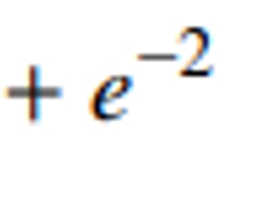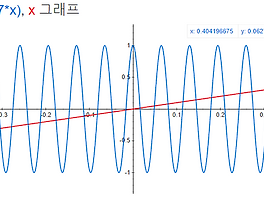The Solution for GRE Biology Practice Test [01-20]
추천글 : 【GRE】 Solution for GRE Biology Practice Test
1. Which of the following pairs of molecules would form hydrogen bonds?


⑴ answer: E
⑵ The difference of electronegativity between C and H is so small than the hydrogen bond is not formed in a C-H bond.
⑶ S-H is similar to O-H because the number of outermost electrons is the same.
2. Proteins destined to be secreted move through the secretory pathway in which of the following orders?

⑴ answer: B
⑵ Golgi cisternae = CGN(cis-Golgi network) + medial + TGN(trans-Golgi network)
3. Stabilization of the unique coiled structure of an alpha helix in a protein is primarily attributed to

⑴ answer: A
4. A DNA strand with the sequence 5' CGA TTG 3' would be complementary to the sequence

⑴ answer: D
⑵ 5' CGA TTG 3'
⑵ 5' ------------- 3'
⑵ 3' GCT AAC 5' = 5' CAA TCG 3'
5. A cell nucleus contains which of the following?

⑴ answer: E
⑵ DNA : DNA is concentrated on a nucleolus in a cell nucleus.
⑶ RNA : rRNA is synthesized in a nucleolus in a cell nucleus.
⑷ protein : DNA polymerase is a kind of proteins.
6. Which of the following best explains how mutations in DNA can result in the expression of a new phenotype?

⑴ answer: A
7. Which of the following techniques could be used to demonstrate protein binding to specific DNA sequences?

⑴ answer: D
⑵ EMSA(electrophoretic mobility shift assay)

Figure. 1. EMSA scheme
8. In cloning experiments on the frog Xenopus laevis, nuclei were removed from intestinal cells of tadpoles and transplanted into zygotes whose nuclei had been removed. A small percent of these zygotes developed into normal frogs, suggesting that

⑴ answer: D
⑵ Intestinal cell is itself able to form a frog because the full genetic information is fully existant in the cell.
9. In garden peas, the allel for tall plants (D) is completely dominant to the allele for dwarf plants (d) and the allele for violet flower color (W) is completely dominant to the allele for white flower color (w). In a cross between a tall violet plant, with the genotype DDWw, and a dwarf white plant, what phenotypic ratio of the progeny would be expected from this cross?

⑴ answer: D
⑵ DDWw × ddww = DdWw (tall violet) : Ddww (tall white) = 1 : 1
10. Which of the following best explains why enzymes are effective in facilitating chemical reactions?

⑴ answer: D
⑵ Enzymes change not enthalpy but activation energy.
11. Targeting of a newly synthesized protein is most likely to require two different signal peptides for which of the following destinations?

⑴ answer: D
12. Approximately what fraction of the human genome encodes proteins?

⑴ answer: A
13. Which of the following contain DNA sequences required for the segregation of chromosomes in mitosis and meiosis?

⑴ answer: B
⑵ Mitotic spindle and centromere are quite related to each other.
14. Of the graphs shown below, which is most representative of the kinetics of ion transport through a membrane channel?

⑴ answer: D
⑵ Unlike simple diffusion, ion channels have saturation points.
15. In eukaryotic photosynthetic cells, which of the following occurs when electrons flow cyclically through the electron transport chain associated with photosystem Ⅰ?

⑴ answer: A
⑵ photosystem Ⅰ : Only ATP is synthesized
⑶ photosystem Ⅱ : ATP and NADPH are synthesized.
16. In the presence of alcohol dehydrogenase, the rate of reduction of acetaldehyde to ethanol increases as the concentration of acetaldehyde is increased. Eventually, the rate of the reaction reaches a maximum, after which point further increases in the concentration of acetaldehyde have no effect. Which of the following is true at the maximum rate of reaction?

⑴ answer: A
17. When an influenza virus enters a cell, it immediately starts to do which of the following?

⑴ answer: C
⑵ C → D → A → B → E
⑶ An influenza virus is a negative-sense ssRNA virus.
18. The action of an inhibitor that diminishes the rate of catalysis by binding reversibly at the active site is best described as

⑴ answer: B
⑵ Competitive inhibitors share the same active site with the substrates.
19. All of the following may serve as intracellular messengers EXCEPT

⑴ answer: C
⑵ Acetylcholine normally appears as a neurotransmitter, not an intracellular messenger.
⑶ Other messengers can be found in cell signaling.
20. In chloroplasts, a certain protein is found in the lumen of the thylakoid (thylakoid space). It is transcribed in the nucleus and synthesized on cytoplasmic ribosomes. How many membrane bilayers must this protein cross to reach its final location?

⑴ answer: C
⑵ the lumen of thylakoid → the thylakoid membrane (1) → the lumen of chloroplast → the inner membrane of chloroplast (2) → the outer membrane of chloroplast (3) → the cell cytoplasm
입력: 2023.05.06 10:41
'▶ 자연과학' 카테고리의 다른 글
| 【GR1724】 The Solution for GRE Biology Practice Test [41-60] (0) | 2023.05.06 |
|---|---|
| 【GR1724】 The Solution for GRE Biology Practice Test [21-40] (0) | 2023.05.06 |
| 【GR1768】 The Solution for GRE Mathematics Practice Test [61-66] (0) | 2023.01.22 |
| 【GR1768】 The Solution for GRE Mathematics Practice Test [41-60] (0) | 2023.01.21 |
| 【GR1768】 The Solution for GRE Mathematics Practice Test [21-40] (0) | 2023.01.21 |




최근댓글